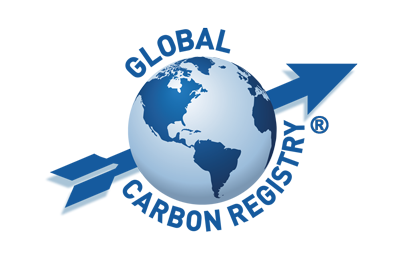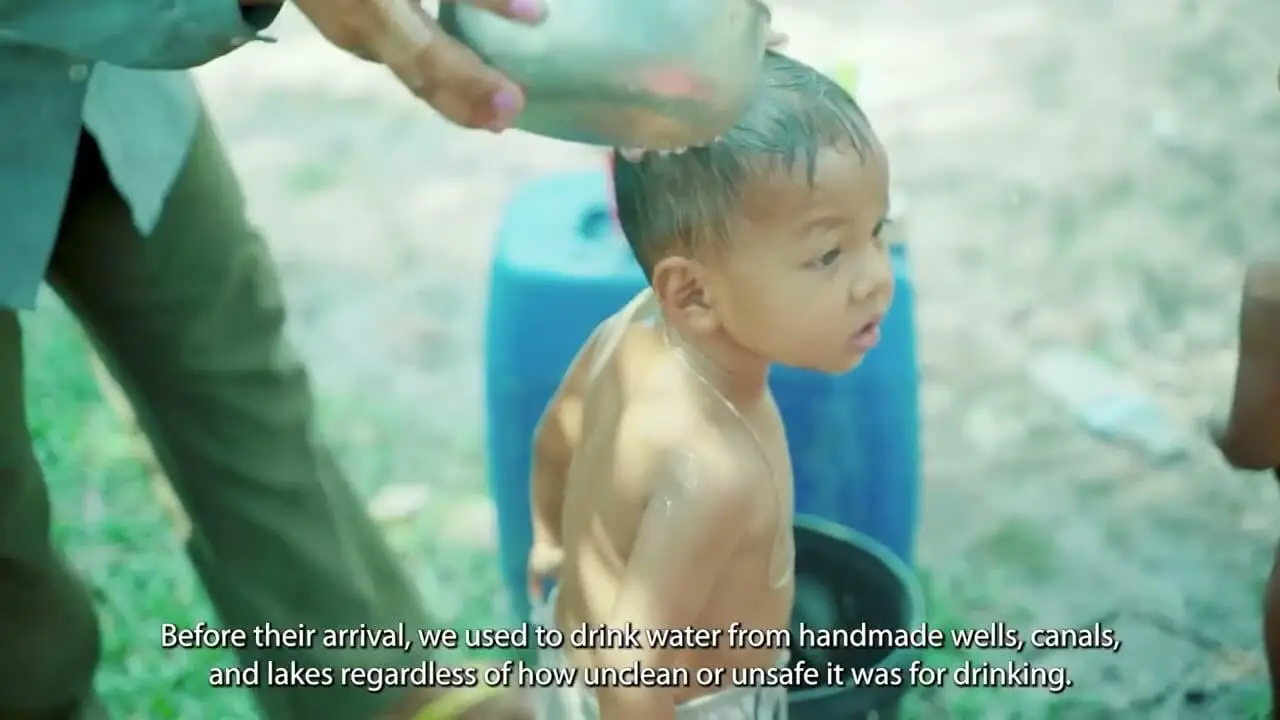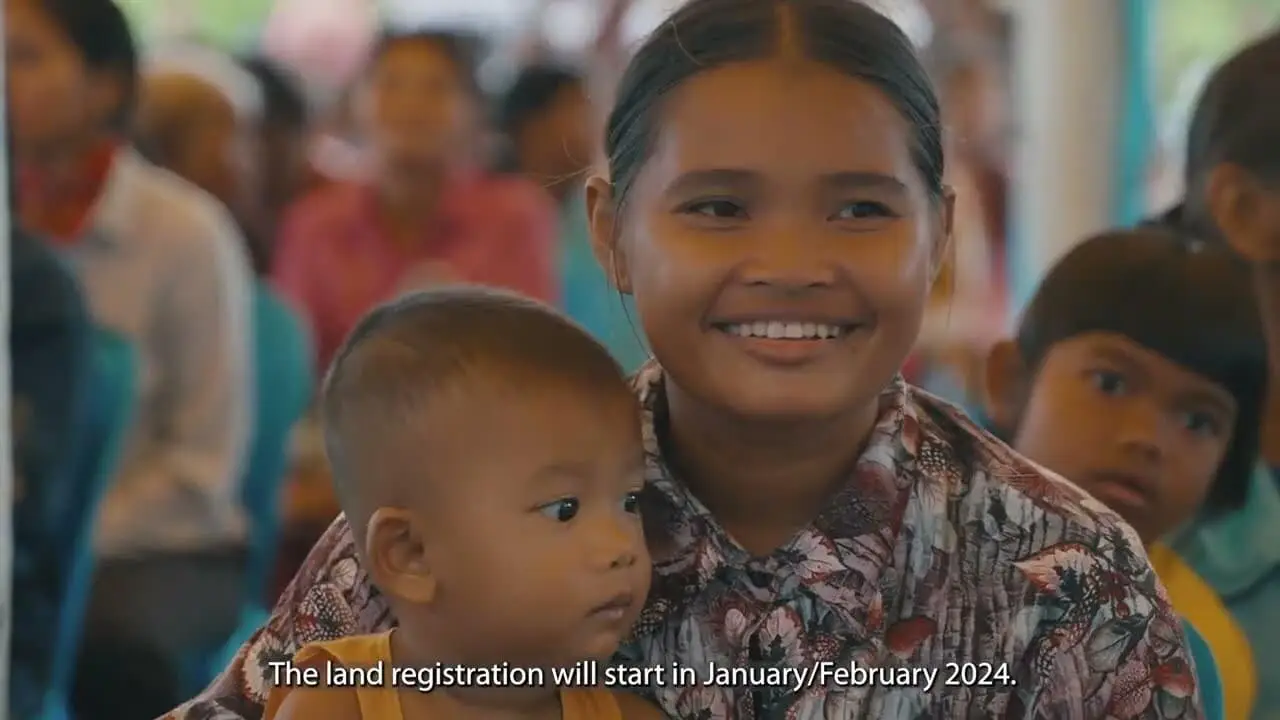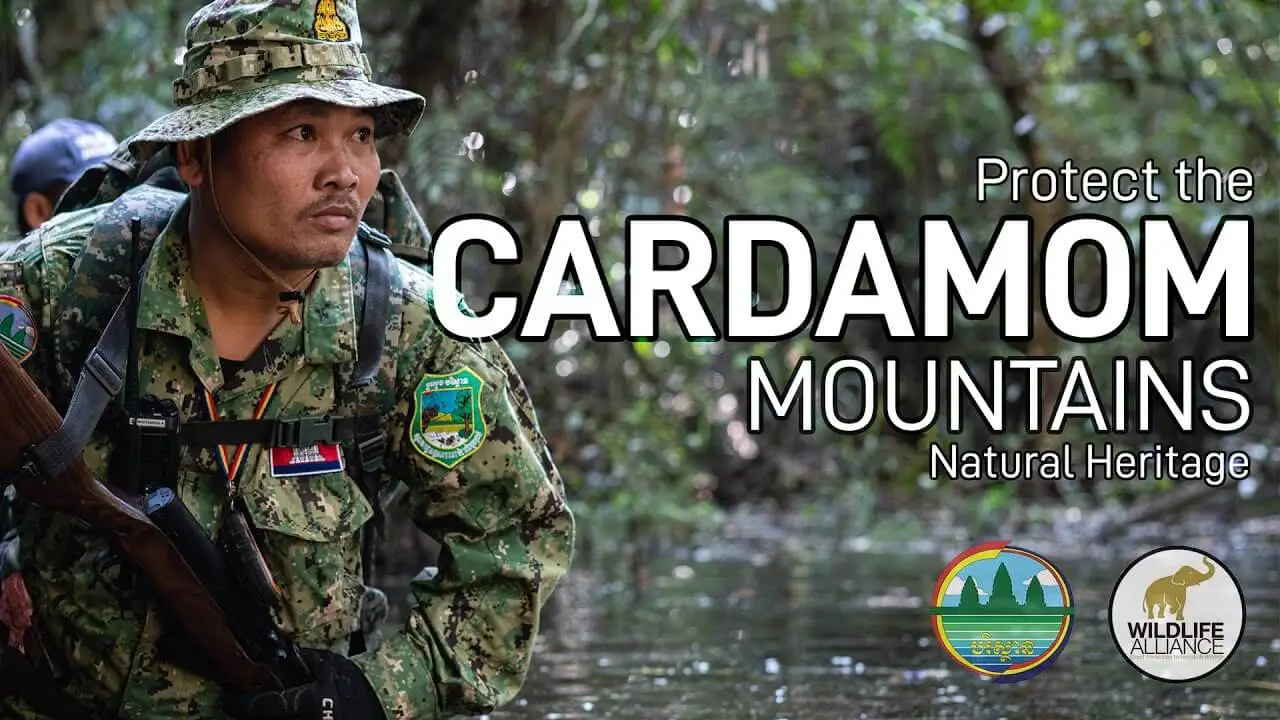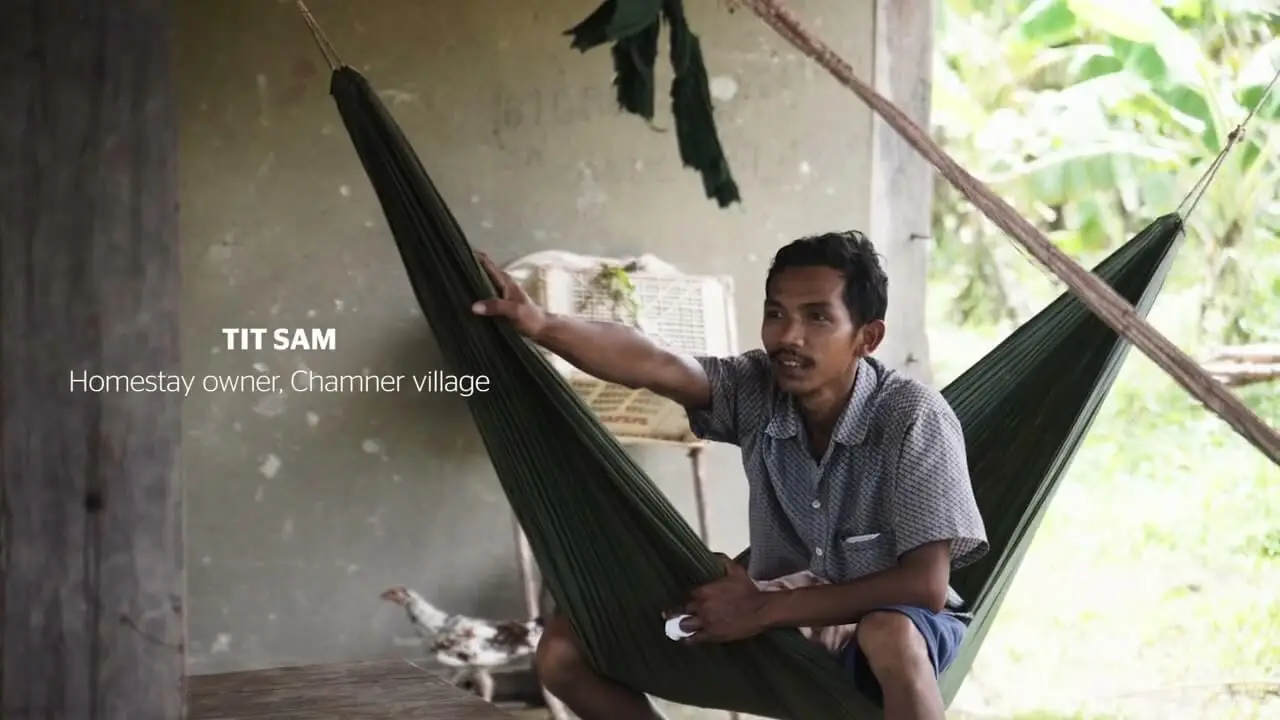This project restores centuries-old fishing valleys in the northern Venice Lagoon. It revitalizes blue carbon habitats, such as salt marshes and wetlands, through traditional water management and ecological restoration. By combining local heritage with ecosystem recovery, the project removes carbon and supports fish nurseries and bird nesting grounds. This sustains small-scale fishing and aquaculture livelihoods passed down through generations, and creates opportunities for nature-based tourism. Improved water flow and stabilized banks help prevent erosion and reduce flood risk, increasing the resilience of low-lying lagoon communities in the face of climate change.
Where & Why
Beyond Venice: Life in the Lagoon
When most travelers picture Venice, they imagine winding canals, stone bridges, and bustling piazzas. But Venice is just one part of a larger ecosystem and a UNESCO World Heritage Site. The historic city sits at the heart of the Venice Lagoon, which spans 212 square miles (550 square kilometers), making it the largest wetland in the Mediterranean Sea. Often called the “floating city,” Venice was built atop 118 of the lagoon’s marshy islands. Its iconic canals, now traveled by gondolas, began as natural tidal channels that were later expanded and engineered over time.
Beyond the city, the lagoon is a patchwork of islands, salt marshes, seagrasses, tidal flats, and fishing valleys. While Venice itself attracts millions of visitors each year, the lagoon and its historic villages offer a slower, rural escape for those looking to avoid the crowds. Travelers can cycle along quiet paths through fishing valleys and salt marshes, explore the lagoon by boat, or go birdwatching in its wetlands, where flamingos, herons, and egrets can be spotted.
A Fragile Ecosystem Under Pressure
Despite its proximity to one of Europe’s most visited cities, the lagoon remains a haven for wildlife. It is home to nearly 100 fish species and provides nesting grounds for more than half of Italy’s bird species. Visitors can join fishermen on their boats to learn about age-old practices and savor classic seafood dishes, such as sardele in saor and bigoli in salsa, made with fish from the lagoon.
Over the past century, humans have reshaped the lagoon by diverting rivers, building jetties and artificial embankments, and dredging deep canals to accommodate large ships. Pollution, motorboat traffic, and marine litter have placed additional pressure on the lagoon’s fragile ecosystems. These changes have had profound effects, altering sediment flow, accelerating erosion, and contributing to the widespread loss of salt marshes and aquatic plant beds. As a result, the lagoon’s salt marshes have shrunk to less than a quarter of the size they were in 1810.
Blue Carbon and Climate Resilience
This loss doesn’t just affect biodiversity; it also weakens one of the lagoon’s natural defenses against climate change. Salt marshes, seagrass, and other aquatic vegetation act as blue carbon ecosystems, some of the planet’s most effective carbon sinks. These coastal habitats can sequester carbon up to ten times faster than land-based forests, making them valuable allies in the fight against climate change. Their decline not only reduces the lagoon’s ability to store carbon but also removes natural barriers that help protect against climate-related threats like storm surges and rising sea levels.
This disappearance of these natural buffers, combined with a buildup of sediment from past human activities, has worsened flood risks across the lagoon. The area is naturally prone to high tides, known as acqua alta. Venice is especially vulnerable to this phenomenon due to its location near the lagoon inlet, and many visitors have experienced it firsthand, wading through flooded piazzas or walking on raised platforms as water seeps into shops and cafes. While these high-water events aren’t new, they’re happening more often as the land slowly sinks and sea levels rise due to climate change.
Worsening flood risks and other ecological changes are already taking a toll on local wildlife. Many coastal birds, like terns and plovers, that nest on salt marsh islets are now threatened. The population of common terns has plummeted by about 87% in the Venice Lagoon over just two decades. One of the main causes is the increased flooding of their nesting sites during the breeding season, as the number of flood days nearly doubled, making it harder for chicks to survive.
Fishing Valleys: Nature and Tradition Intertwined
While many human interventions have disrupted the lagoon’s natural balance, the traditional fishing valleys, known locally as valli da pesca, offer a different story. Originally created for fish farming as early as the 11th century, many of these semi-enclosed wetlands have evolved into important habitats. Formed by enclosing shallow areas with earthen embankments and using gates to control the tides, these man-made landscapes mimic natural wetlands through a mosaic of ponds, canals, and reed beds. Algae, aquatic plants, and small invertebrates—like crabs, shrimp, and mollusks—form the base of complex food webs that support birds, fish, and other wildlife.
Beyond their ecological role, the fishing valleys provide food and income for local communities through small-scale fish production and aquaculture. For many families, working in the valleys is a way of life passed down through generations, rooted in traditional fishing techniques, specialized crafts related to the structures’ maintenance, and deep knowledge of the lagoon’s ecosystems.
But this long-standing connection between people and nature is under threat. Many fishing valleys are unmanaged or abandoned, leading to problems such as polluted water, low oxygen levels, and a loss of habitat and landscape diversity. As a result, they capture significantly less CO2 from the atmosphere and might even release more carbon than they absorb, turning them from a natural solution into part of the climate problem.
How & Who
Restoring Water Flows and Boosting Blue Carbon Storage
The Valle Paleazza carbon offset project was launched in 2021 to improve the management of organic aquaculture in the northern Venice Lagoon. The project focuses on restoring blue carbon habitats near the ancient village of Lio Piccolo, including fishing valleys, wetlands, and salt marshes.
The project rehabilitates natural water flows through the strategic opening and closing of fishing valley gates. This allows cleaner lagoon water to enter while keeping out polluted, oxygen-depleted water. It also deepens the channels that circulate water through the system. This improves water quality and helps nutrients reach the muddy bottom.
The restored water circulation encourages large blooms of phytoplankton, microscopic plant-like organisms that thrive in nutrient-rich waters. Though they may be tiny, phytoplankton multiply quickly, often doubling in number each day. Because of this, phytoplankton take in carbon at a remarkable rate, removing it from the water through photosynthesis. When they die, some of this carbon sinks to the seabed, where it can be trapped in biomass and sediments for hundreds of years instead of being released back into the air. Improved water quality also boosts carbon uptake by seaweed and other aquatic vegetation. Carbon removal is further supported by the occasional planting of trees and shrubs along the banks of the water channels. Through these activities, the project aims to transform the valleys into effective carbon sinks, resulting in the additional removal of nearly 30,000 metric tons of CO₂ from the atmosphere each year.
Reviving the Lagoon’s Ecosystems
Beyond carbon, the project helps revitalize the lagoon habitat. It supports the growth of phytoplankton and other organisms that form the base of the food chain. Tree roots and managed water channels help prevent erosion along the banks and keep the lagoon bottom stable. The project also creates ecological corridors, allowing birds and fish to move safely between habitats in the lagoon as they feed, nest, and migrate. The vegetation in fishing valleys buffers the lagoon’s more sensitive ecosystems by filtering out pollutants and excess nutrients.
Supporting Fishing and Ecotourism Livelihoods
A healthier ecosystem creates optimal conditions for fish farming, which in turn supports the communities that depend on the lagoon for their livelihoods. The calm waters and plants provide sheltered breeding grounds and nurseries where young fish can grow before moving into open waters. This helps sustain fishermen and aquaculture farmers, while keeping traditional ways of life alive. The project also increases the valleys’ ability to hold floodwater during high tides, reducing the risk of flooding in nearby areas. In this way, the restored valleys strengthen food security and protect surrounding communities from sea level rise and storm surges, building resilience in the face of a changing climate.
A thriving lagoon also opens up opportunities for ecotourism. The fishing valleys give visitors a chance to experience the area’s natural beauty and fishing heritage up close. Guests can spot local wildlife on guided nature excursions, learn about the area’s ecology, and enjoy fresh-caught fish cooked over an open grill. These hands-on experiences inspire conservation while generating income for local communities through tours, accommodation, and the sale of local products.

Environmental Benefits
- Mitigates climate change by sequestering blue carbon in salt marshes, wetlands, and aquatic plants
- Restores degraded coastal habitats and strengthens the aquatic food web, supporting fish, birds, and other wildlife
- Improves water quality by enhancing natural filtration processes

Community Benefits
- Improves climate resilience through food security and flood protection in low-lying areas
- Supports income-generating activities such as fishing, aquaculture, and ecotourism
- Protects traditional livelihoods and cultural heritage
- Enhances the quality of immersive, nature-based tourism experiences that help spread tourism beyond overtouristed areas
Project Type

Blue/Teal Carbon
Location
Italy
Annual CO2 Reduction
29,962 metric tons CO2e (expected annual average for crediting period)
SDGs Supported
Verification Standard
Project Developers
Treebu
Project Documents
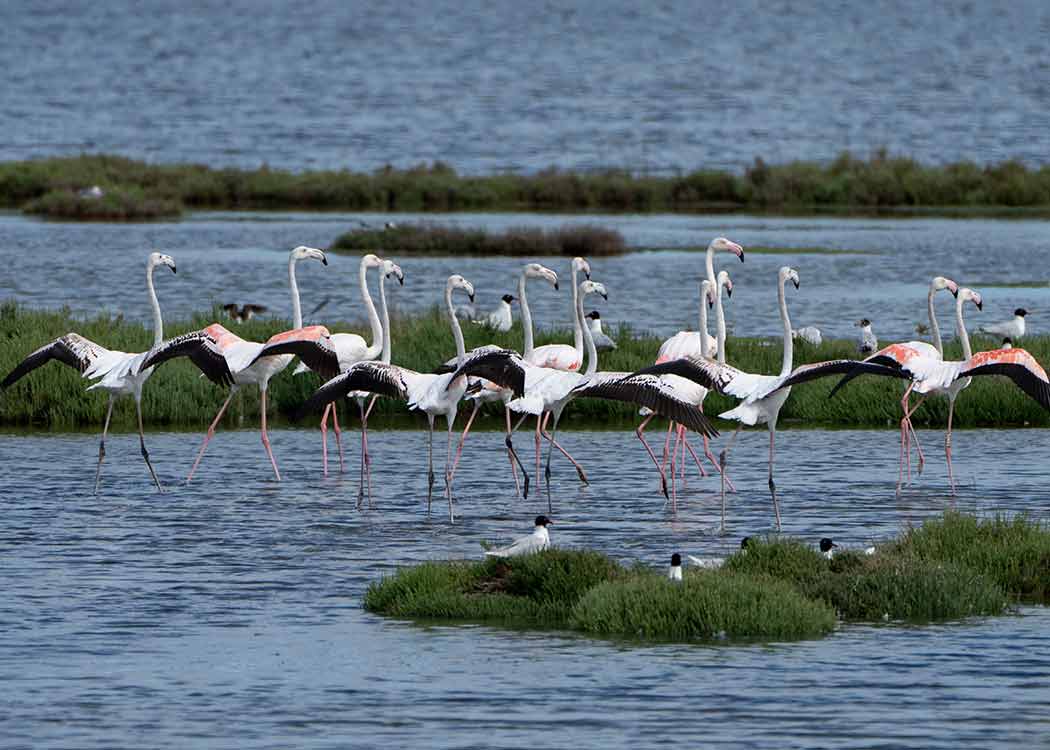
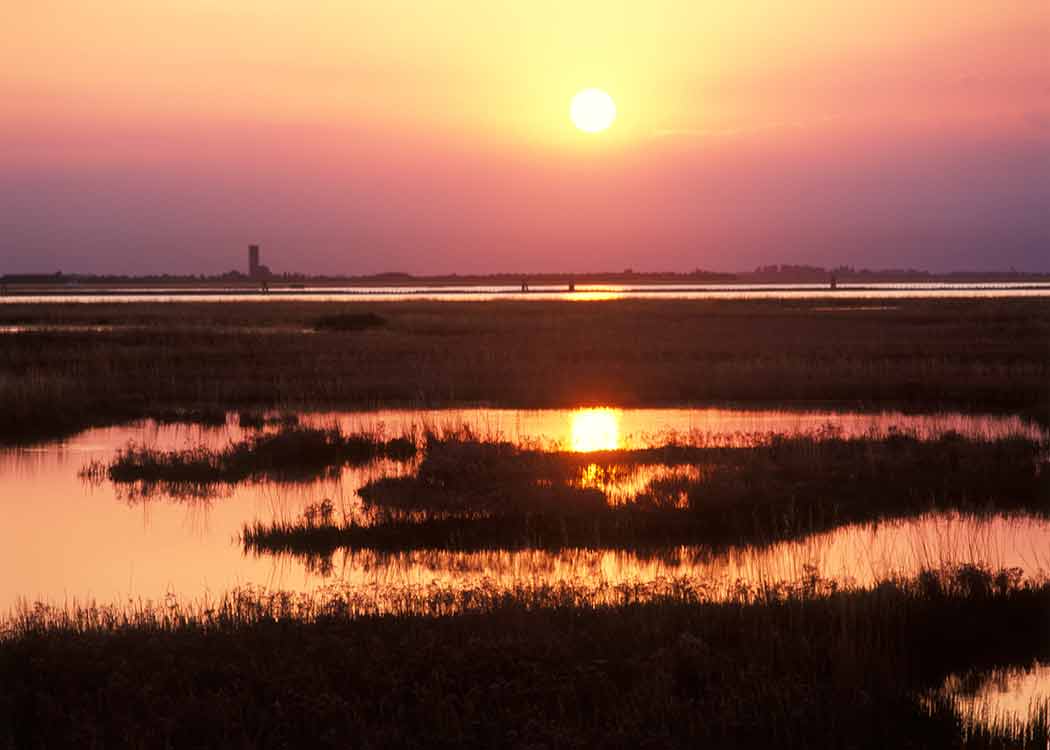
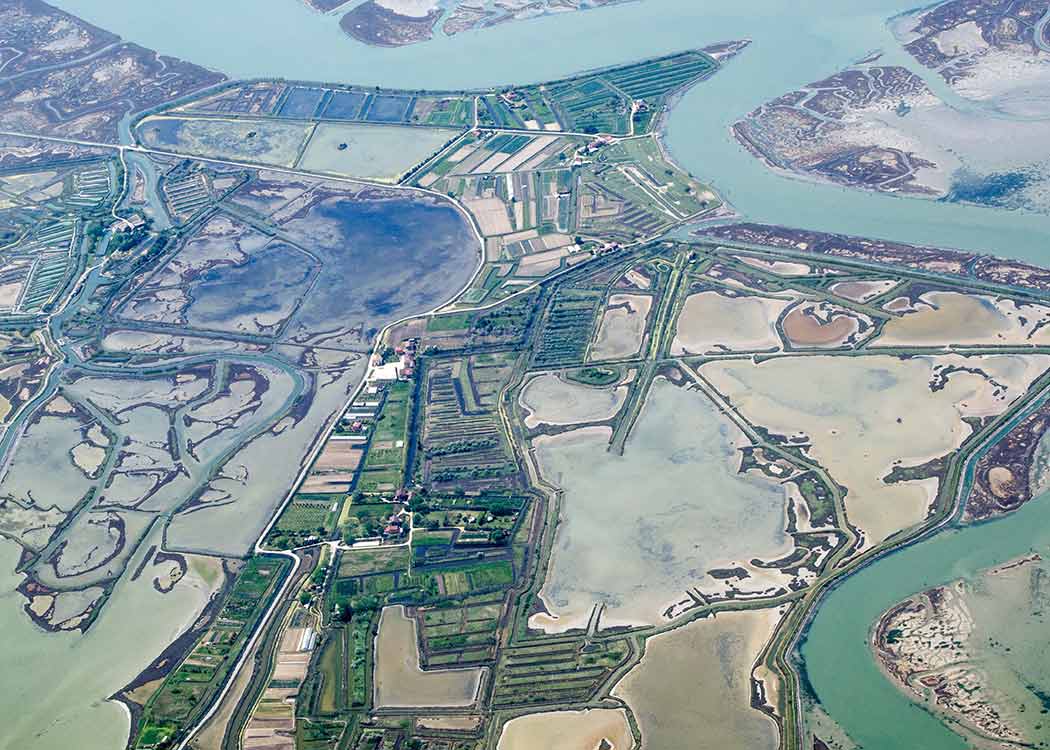
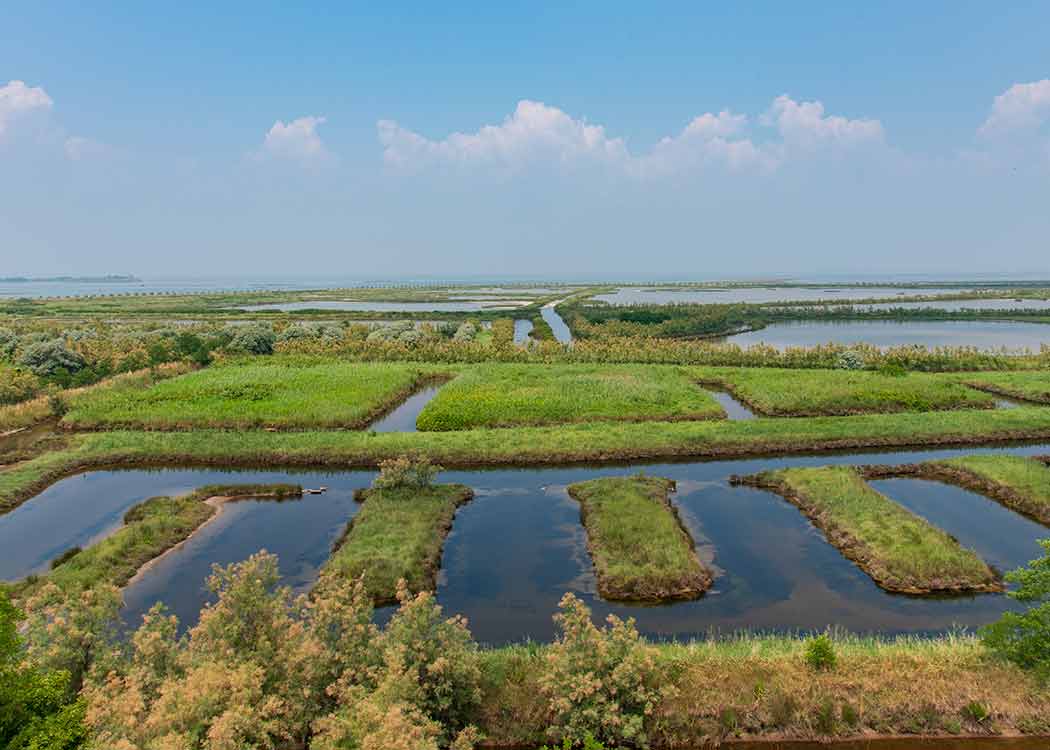
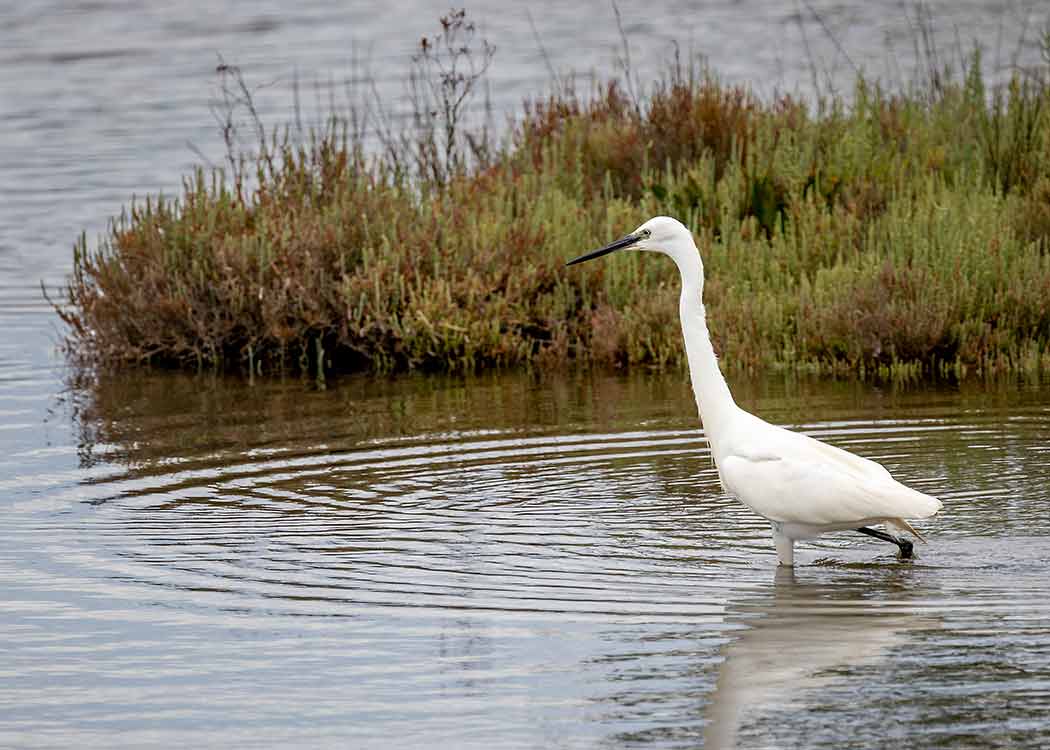
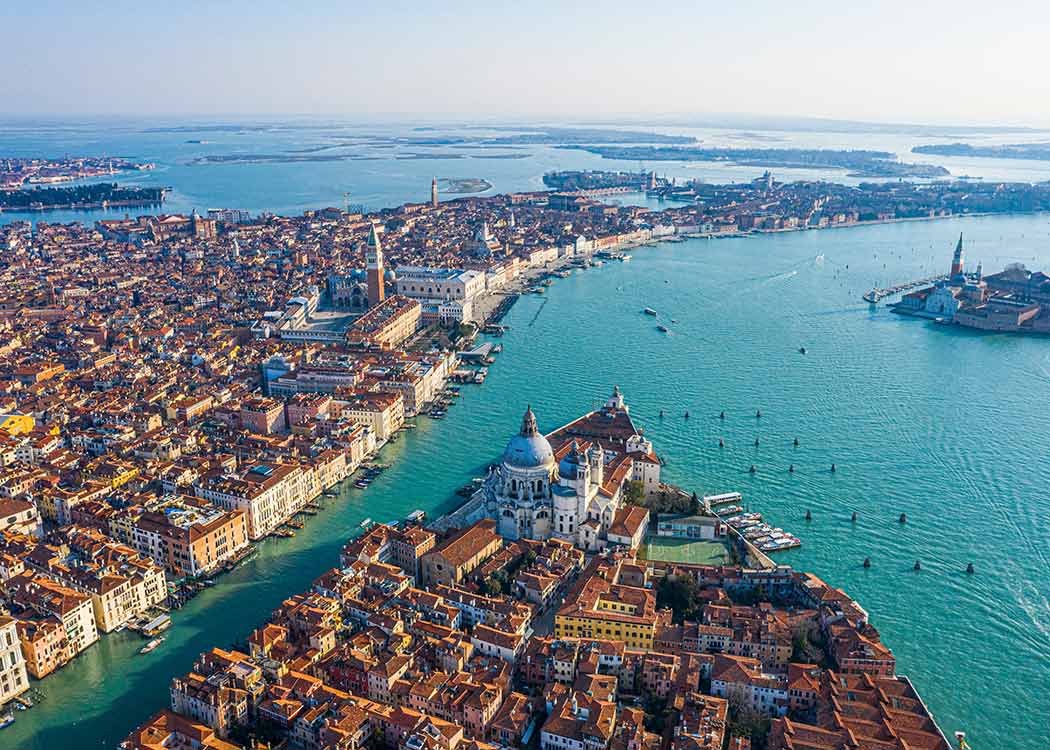
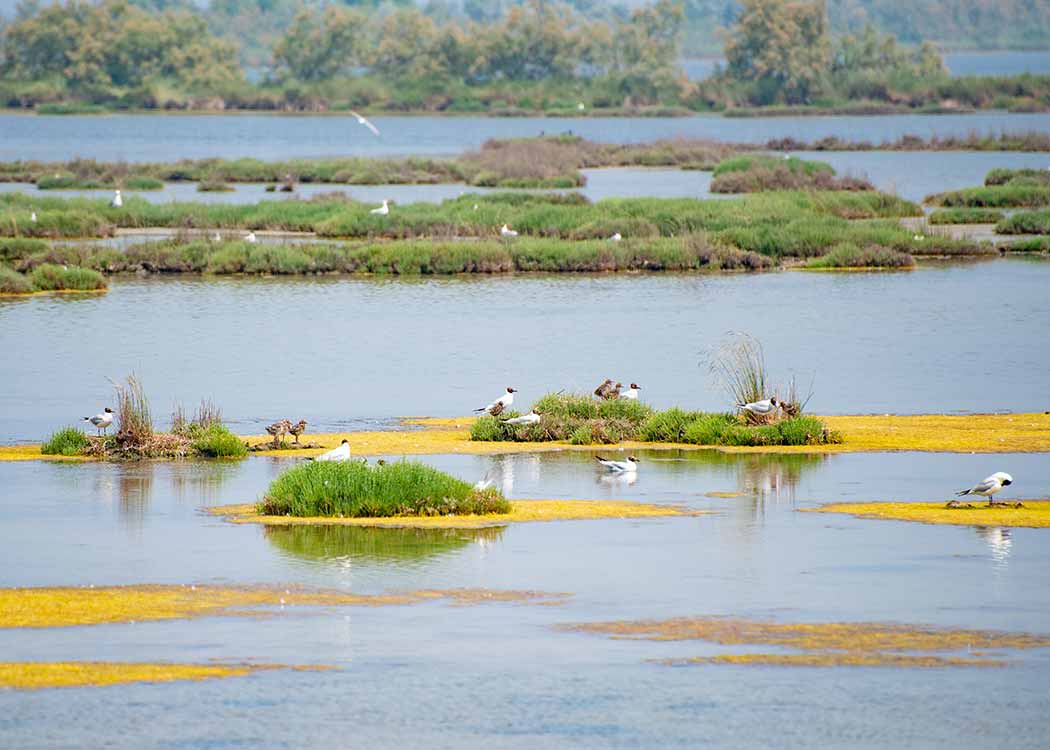
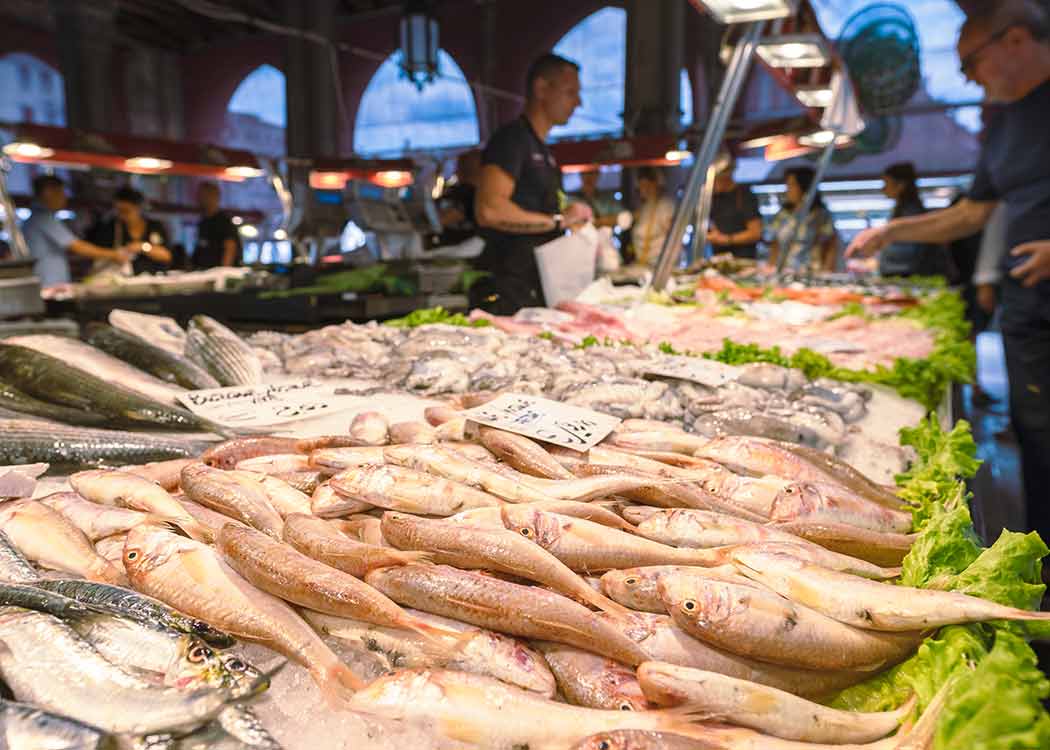
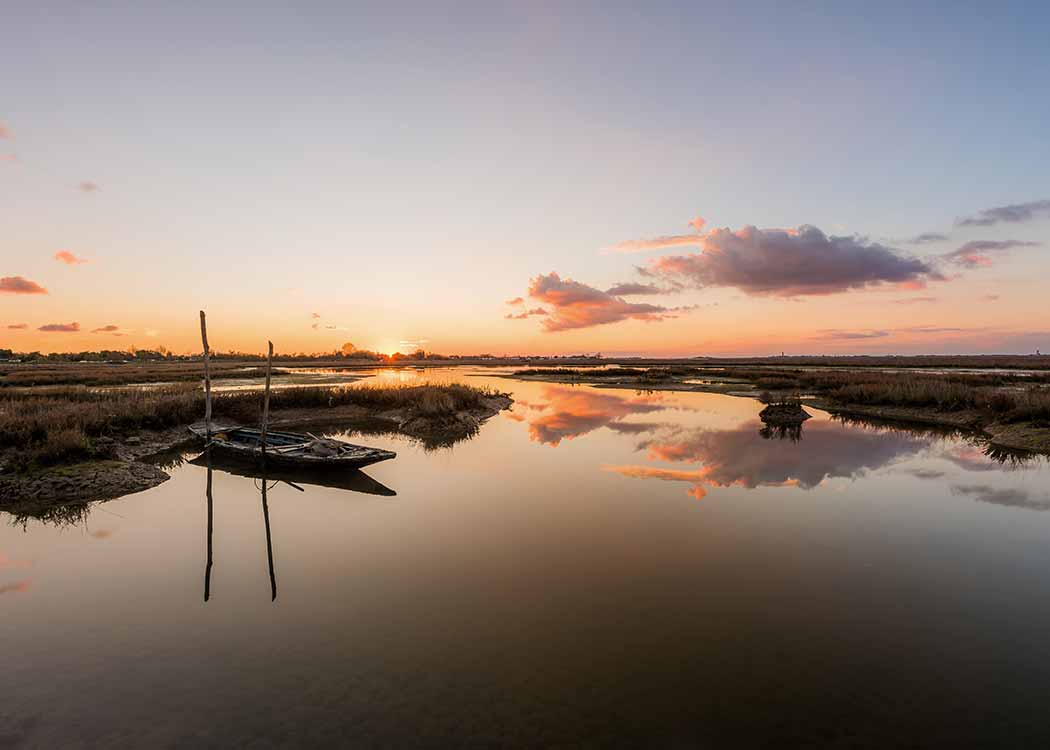
Related Travel Experiences
These immersive experiences offer a firsthand opportunity to learn about the lagoon ecosystem that the project is protecting and see the real-world results on the ground.
A Day in the Valley
Valle Paleazza offers immersive experiences that blend nature, culture, and the authentic flavors of the Venetian Lagoon. Guided educational trails showcase the valley’s plants and wildlife, highlighting its ecosystems and the traditions connected to this landscape. Other experiences include barbecues featuring fresh fish from the valley, seasonal tastings of regional specialties and wines, and aperitifs enjoyed among the scenic salt marshes. Together, these activities provide opportunities to explore the lagoon beyond the typical tourist trail, fostering deeper connections with its wildlife and heritage while savoring its distinctive cuisine.

What is Blue Carbon?
Explore what blue carbon ecosystems are, how they store carbon, and the benefits they provide for both people and wildlife. Read our comprehensive guide about this natural climate solution.

Offset your Travel Footprint
Calculate and offset the carbon footprint of your flight in seconds via our online carbon calculator. Already know your carbon footprint? Click the option to “offset now.”








